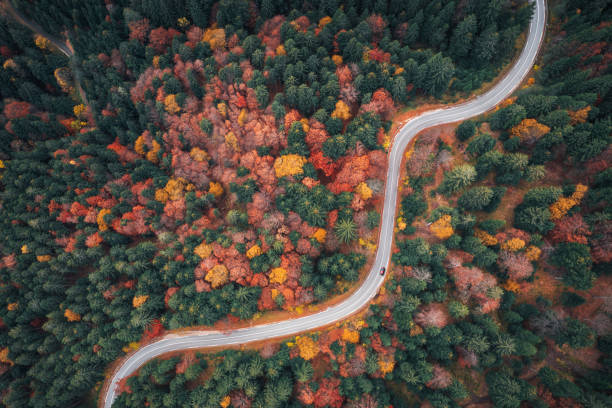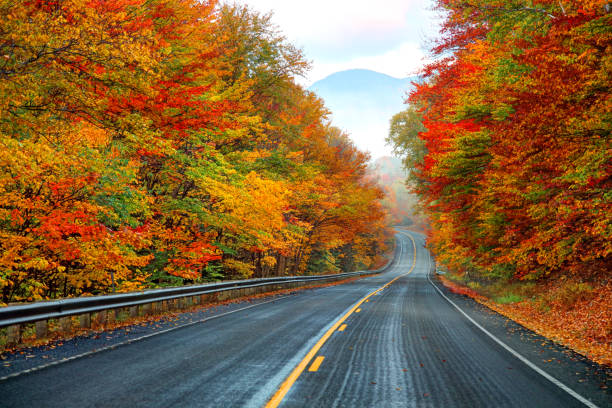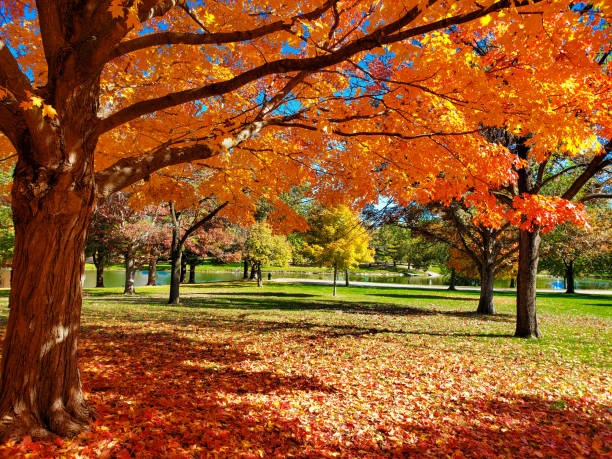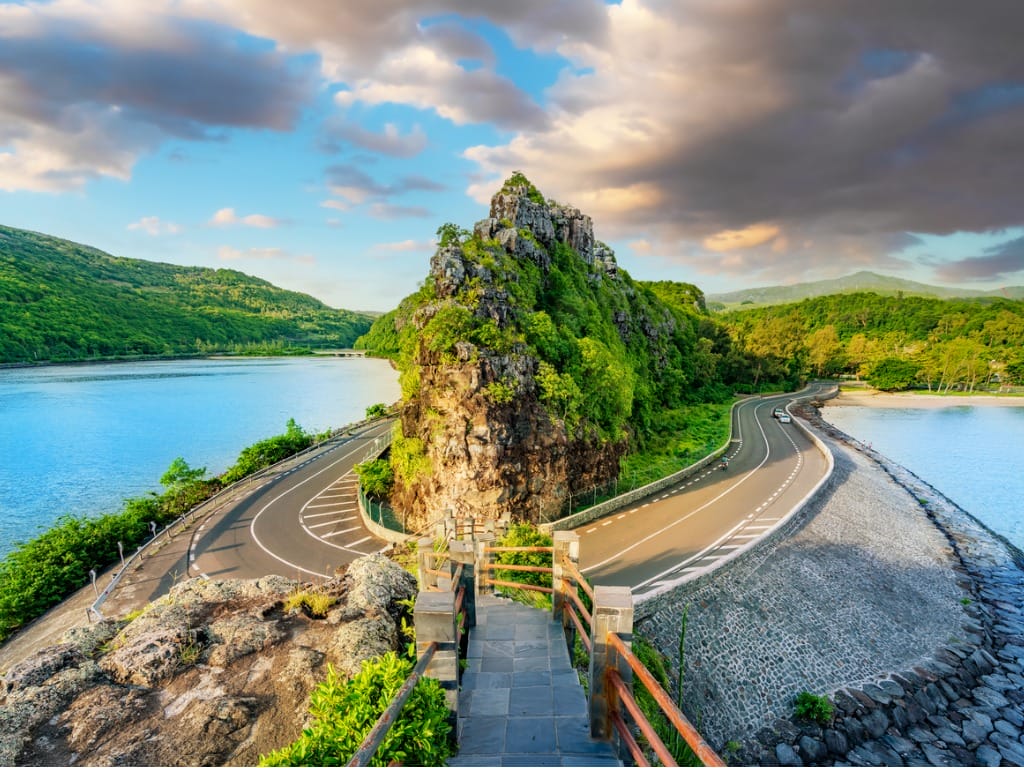As summer fades into autumn, a kaleidoscope of colors emerges across the United States. From the rolling hills of New England to the rugged mountains of the West, nature paints a breathtaking canvas. Whether you’re a leaf peeper seeking vibrant vistas or an outdoor enthusiast looking for an adventure, the best fall foliage spots are waiting to be discovered. In this article, we’ll dive into the beauty of fall foliage, explore the science behind changing leaf colors, and unveil the top destinations to witness this spectacular show.

Understanding the Beauty of Fall Foliage
There’s something magical about the vibrant hues that grace the trees during the fall season. As the days shorten and temperatures drop, trees go through a remarkable transformation. The green pigment in leaves, called chlorophyll, breaks down, revealing the brilliant colors beneath. Shades of red, orange, yellow, and brown emerge, creating a mesmerizing visual spectacle.
When it comes to fall foliage, timing is everything. Different tree species change colors at different times. Factors such as temperature, sunlight, and moisture also play a role in the intensity of the display. Mother Nature’s brushstroke varies each year, making every autumn a unique experience.
The beauty of fall foliage is not just limited to its visual appeal. The changing colors also serve a purpose in the ecosystem. As the leaves prepare to fall, they release nutrients back into the soil, enriching it for future growth. This natural cycle ensures the health and vitality of the forest.
The Science Behind Changing Leaf Colors
Secretly hidden within leaves, pigments called carotenoids and anthocyanins are responsible for the bewitching palette of fall colors. Carotenoids produce yellow and orange hues, while anthocyanins create red, purple, and blue shades. When the production of chlorophyll slows down, these pigments take center stage, leaving us in awe of nature’s artistry.
But why do leaves change color in the first place? The answer lies in the changing seasons. As winter approaches, the days become shorter and the amount of sunlight decreases. This triggers a series of chemical reactions within the leaves, leading to the breakdown of chlorophyll and the unveiling of the vibrant pigments.
It’s fascinating to note that weather conditions influence the brilliance of fall foliage. Cooler temperatures and sunny days enhance the chemical processes that lead to intense colors. However, if there is an early frost or heavy rain, the colors may appear muted. While we marvel at this seasonal spectacle, scientists continue to unravel the intricate relationship between climate patterns and leaf coloration.

Why Fall Foliage Varies Across Regions
The United States boasts a diverse landscape, and fall foliage varies greatly from region to region. This variation is due to a combination of factors such as geography, climate, and tree species. Let’s explore some of the best fall foliage spots across the country.
In the Northeast, New England is renowned for its stunning fall foliage. The region’s mix of maple, oak, and birch trees creates a breathtaking display of reds, oranges, and yellows. The White Mountains in New Hampshire and the Green Mountains in Vermont are particularly popular destinations for leaf peepers.
Heading west, the Rocky Mountains offer a different kind of fall foliage experience. Aspen trees dominate the landscape, turning the mountainsides into a golden paradise. The contrast between the vibrant yellow leaves and the rugged peaks is truly awe-inspiring.
Further south, the Great Smoky Mountains National Park in Tennessee and North Carolina is a must-visit for fall foliage enthusiasts. The park’s diverse range of tree species, including sugar maples and hickories, create a kaleidoscope of colors. The misty mountains add an ethereal touch to the already picturesque scenery.
On the West Coast, California’s wine country is not only known for its vineyards but also for its stunning fall foliage. The vineyards are surrounded by oak trees, which turn various shades of red and orange. The combination of vineyards, rolling hills, and colorful foliage makes for a truly enchanting experience.
Whether you’re exploring the vibrant forests of the Northeast, the majestic mountains of the Rockies, or the picturesque landscapes of the West Coast, fall foliage offers a feast for the senses. The beauty of nature’s transformation is a reminder of the ever-changing world we live in, and a celebration of the wonders that each season brings.
The Northeast: A Tapestry of Autumn Hues
When it comes to fall foliage, few regions rival the breathtaking beauty of the Northeast. New England, in particular, is renowned for its iconic landscapes. The quaint towns of Vermont, dotted with historic buildings, offer a charming backdrop to the vibrant leaves. Stowe, known as the “Fall’s Color Capital,” boasts stunning views of Mount Mansfield and a scenic drive along the Smugglers’ Notch.
The Appalachian Trail, stretching over 2,000 miles from Georgia to Maine, also showcases nature’s seasonal masterpiece. Hikers can revel in the kaleidoscope of colors as they traverse through forests and mountains, creating lifelong memories.

The Midwest: Rustic Reds and Golden Yellows
The Great Lakes Region is a hidden gem for fall foliage enthusiasts. The Michigan Upper Peninsula transforms into a paradise of rustic reds and golden yellows. The Porcupine Mountains State Park offers breathtaking vistas, while the picturesque town of Marquette provides a perfect blend of outdoor beauty and charming hospitality.
The Ozarks in Missouri and Arkansas are another Midwest delight. With their rolling hills and dense forests, this region transforms into a sea of warm colors. The Ozark Mountain region offers various hiking trails, scenic byways, and charming towns like Eureka Springs, making it an ideal destination for leaf peepers.
The West: Unexpected Fall Foliage Destinations
While the West is often associated with rugged landscapes and arid climates, it also surprises visitors with unexpected fall foliage. The Rocky Mountains of Colorado showcase breathtaking elevation variations, leading to an extended fall season. The Maroon Bells, near Aspen, offer a postcard-worthy scene as they reflect on the still waters of Maroon Lake.
In the Pacific Northwest, the color palette evolves in a different way. Vibrant leaves blend with evergreen trees, creating a contrast that is truly mesmerizing. Travelers can explore the Columbia River Gorge, with its countless waterfalls and hiking trails, or the Mount Rainier National Park, where meadows speckled with fall colors set against the majestic backdrop of a dormant volcano.
The South: Late-Season Fall Colors
For those seeking autumnal charm in the later months, the South offers a prolongation of the fall season. The Great Smoky Mountains National Park, spreading across Tennessee and North Carolina, boasts one of the longest-lasting fall foliage displays. Visitors can drive along the Blue Ridge Parkway or hike to Clingmans Dome for panoramic views of the colorful valleys below.
In Texas Hill Country, the magic of fall unfolds in unexpected ways. Cypress trees turn shades of copper along the Guadalupe River, while the Lost Maples State Natural Area becomes an artist’s palette with its mix of maple, oak, and persimmon trees. Enchanting small towns like Fredericksburg offer a blend of German heritage and southern hospitality, making it an idyllic escape for leaf-watching enthusiasts.
Fall foliage is one of the most beautiful naturel events that we are fortunate to experience. A magical time where landscapes look painted, where bright colors leave lasting impressions.



